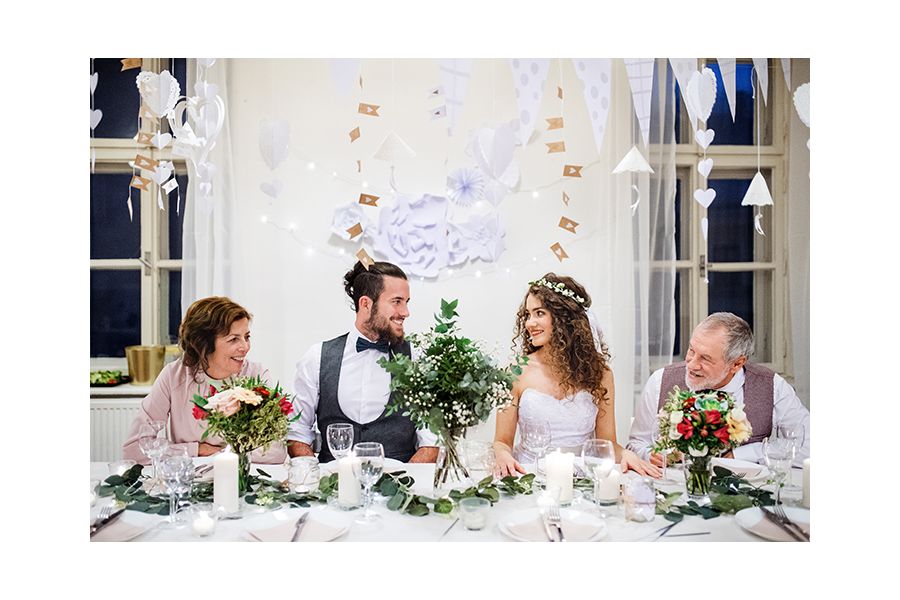9 rules for creating a seating chart

The dreaded seating chart – every couples’ least favorite wedding planning task. Creating a seating chart is a careful balancing act of 100-plus people’s personalities and a limited physical space.
Luckily, it’s not an absolute requirement. Many couples choose to let their guests seat themselves at the reception. However, if you’re considering having a plated dinner or a large number of guests, assigned seats can help prevent last-minute headaches for everyone involved.
Here’s are nine do’s and don’ts to help you craft the perfect seating chart for your wedding.
DO be methodical and organized.
A seating chart is just like a puzzle, so start by laying out all your pieces (i.e., guests) in a spreadsheet. Then, group people according to their relationship to you, like your college friends, partner’s close family, your extended family, etc. You might find it helpful to create a spreadsheet or diagram to visualize the chart better – and also ensure no one is accidentally left out!
DON’T create a “singles table.”
Despite what romantic comedies might tell you, this isn’t a great way to set people up. Instead, try to seat guests without plus-ones next to people they already know.
DO talk to your parents.
Even if your parents aren’t hands-on with the rest of your wedding, enlist their help with the seating chart. They will probably have better insights into relationships between extended family members and where to seat their friends.
DON’T feel obligated to have a head table.
Traditionally, the newlyweds are sat at a long rectangular table at the front of the room with their bridesmaids and groomsmen.
Of course, you should feel free to do what feels comfortable. Maybe that means doing a sweetheart table just for you and your spouse, or you can sit with your parents and let the wedding party sit with their dates, or you can skip the convention entirely!
DO think about making a kids’ table.
Have a lot of little ones on your guest list? It might be easiest to sit them all at their own table with paper tablecloths, plastic cups and kid-friendly activities (like coloring pages or simple games). Just be sure not to seat them too far from their parents or assign an adult supervisor.
DON’T put older guests near speakers.
Older friends and family members may already have trouble hearing, so avoid seating them right next to the DJ booth or live band. This will allow them to be social and carry on conversation during dinner.
DO leave room for extra guests.
No matter how many reminders you send out asking for RSVP’s, there will inevitably be some guests who show up with last-minute additions. Avoid awkwardly trying to squeeze in extra chairs by leaving a few open spaces.
DON’T overcrowd tables.
Similarly, it’s always better to under-seat tables than trying to pack everyone in like sardines. Most tables seat around eight to 10 people, so if you have a larger group than that, break them up into multiple tables so everyone has plenty of elbow room.
DO get creative with the chart itself.
There are so many different ways to present your seating chart, so have fun with it! For a rustic-chic look, upcycle picture frames into seating chart holders. Or, if you’re planning a more modern affair, use a sheet of acrylic to list guests’ assignments. Painted windows or mirrors are always an elegant way to present table numbers, while themed tables can add a bit of fun and whimsy to finding your seat.